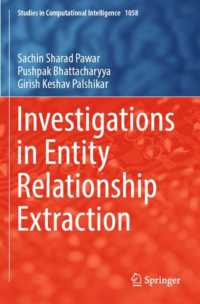- ホーム
- > 洋書
- > ドイツ書
- > Humanities, Arts & Music
- > Linguistics
- > slavic linguistics
基本説明
The book formulates tha rules that govern the use of articles and other markers of (in) definiteness in Modern Standard Bulgarian in comparison with the seventeenth century, and constructs a model of transition from the older system to the modern one.
Full Description
In its evolution from a synthetic to an analytic language, Bulgarian acquired a grammaticalized category of definiteness. The book presents the first attempt to explore in detail how this happened by comparing the earliest Modern Bulgarian texts with contemporary dialect and standard Bulgarian data. The basic units of analysis are the various types of nominal structures headed by nouns or pronouns. The analysis requires the strict terminological disentanglement of form from content and the adoption of a default inheritance model of definiteness that allow the exhaustive classification and tagging of nominal structures encountered in the texts. Tagging makes it possible to apply quantitative analysis to nominal structure and to assess the types available in the early texts from a current native-speaker perspective.
Based on an S-curve model of language change, the study establishes that overt markers of definiteness were first made available to identifiability-based definites, then to inclusiveness-based definites, quantitative generics and unique referents. The overt markers of indefiniteness followed suit, separating indefinites from non-specifics and typifying generics. This progression of definiteness was directed by variables such as person, animacy, gender, number and noun-class, and started in contexts in which definiteness closely interacted with possessivity. Such an analysis leads to the realization that the two-dimensional S-curve model does not account for all language change and that there is a need for a three-dimensional model. It also demonstrates that, contrary to previous assumptions, there is continuity between the early Slavic marker of definiteness (long-form adjectives) and the Modern Bulgarian article. This discovery, in conjunction with geolinguistic arguments, sheds new light on the role that relations inside the Balkan Sprachbund played in the grammaticalization of Bulgarian definiteness.








